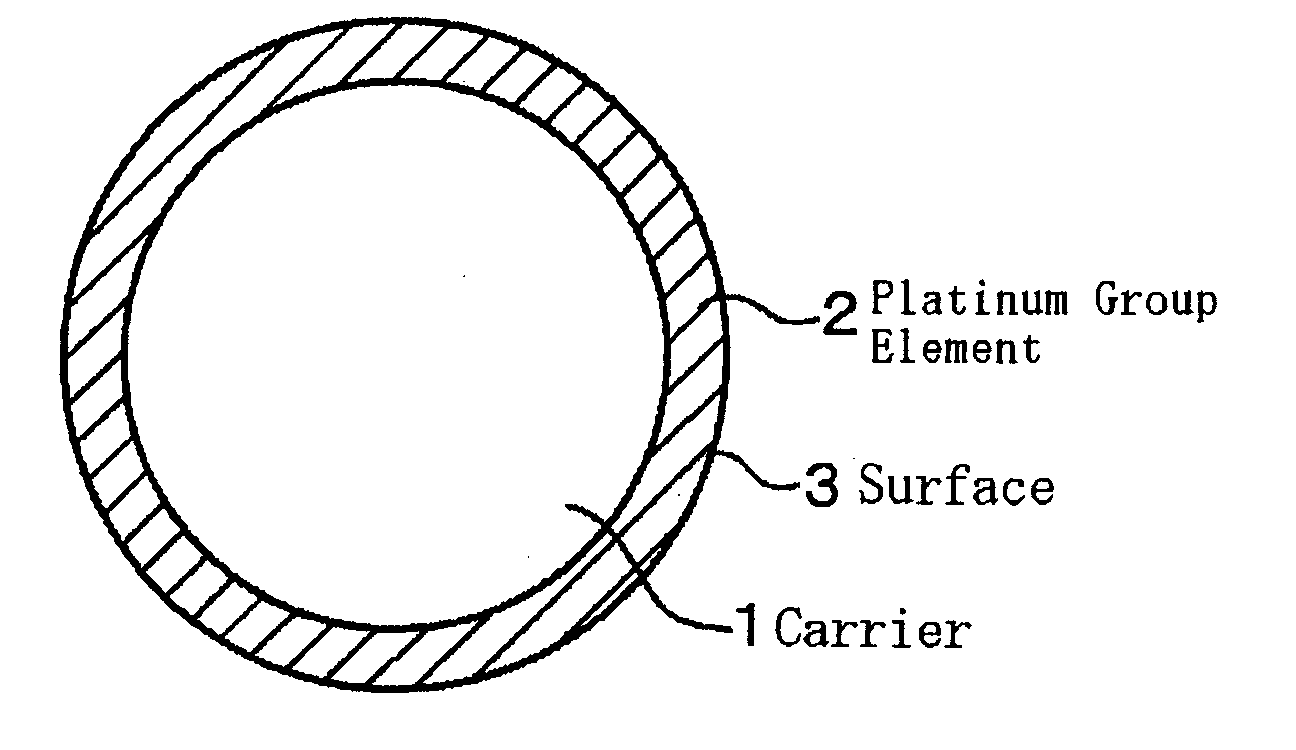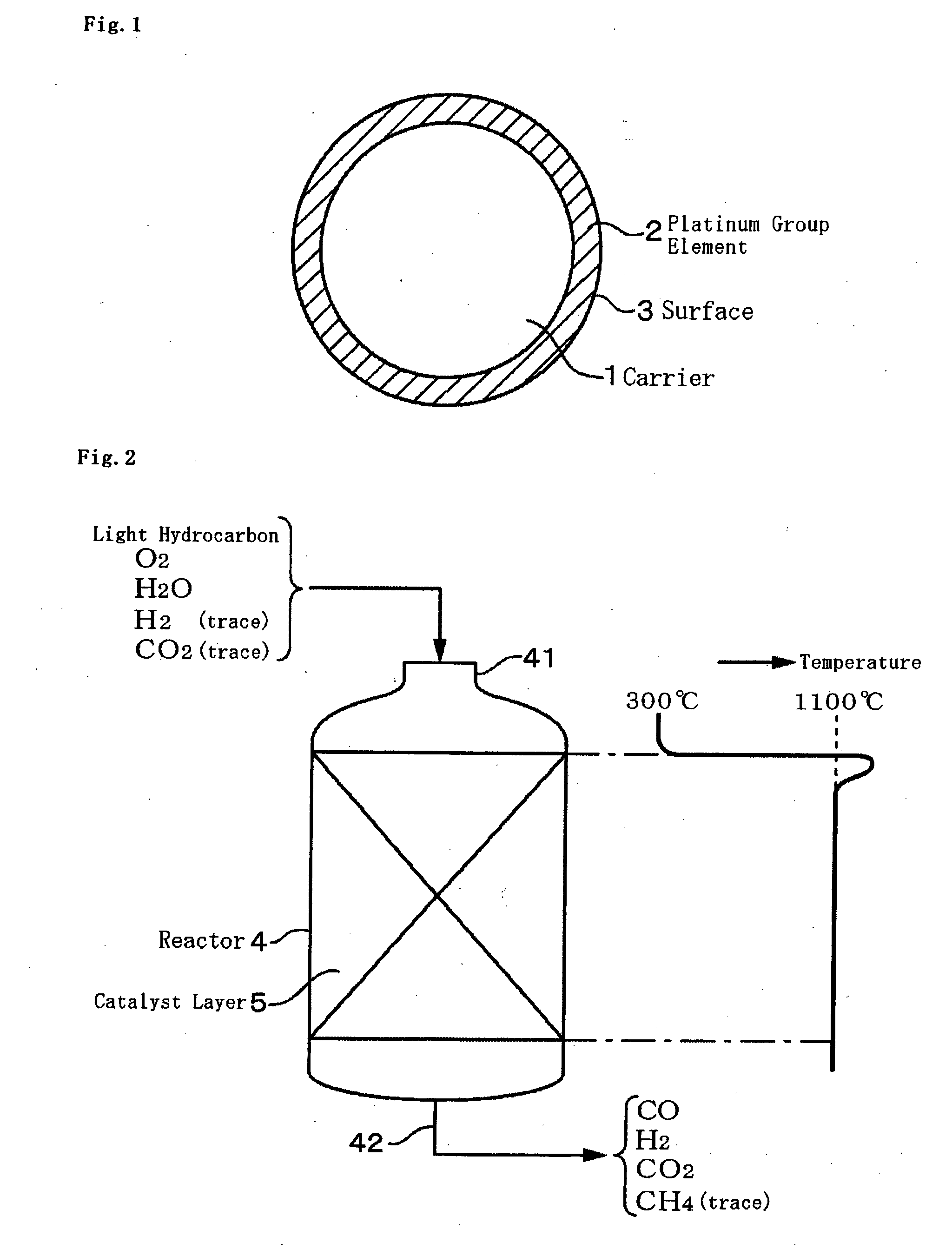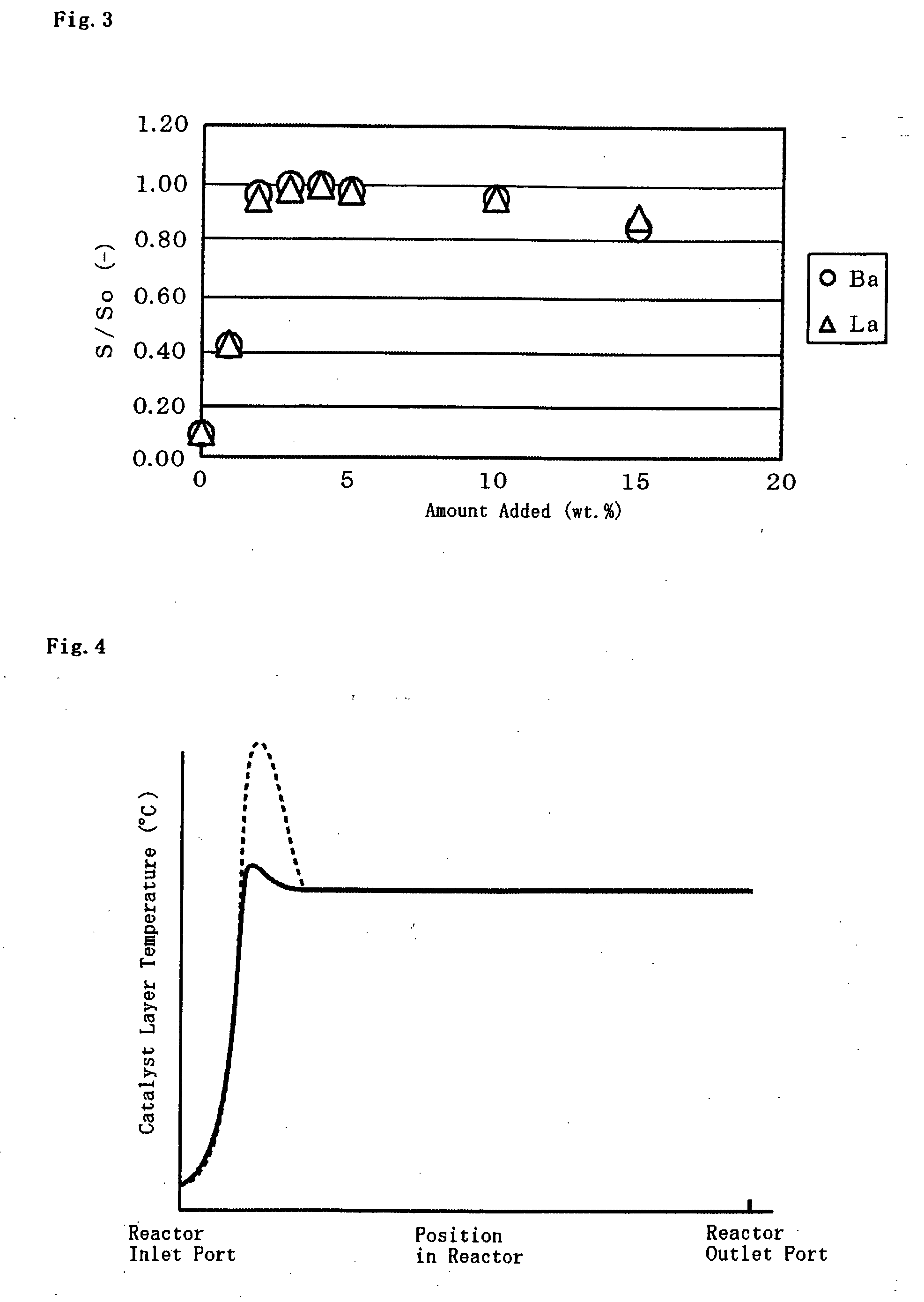Catalyst for Catalytic Partial Oxidation of Hydrocarbon, and Method for Producing Synthetic Gas
a hydrocarbon and catalytic partial oxidation technology, which is applied in the direction of metal/metal-oxide/metal-hydroxide catalysts, physical/chemical process catalysts, bulk chemical production, etc., can solve the problem that nickel aluminate alone cannot have sufficient heat resistance, and the carrier containing nickel aluminate is significantly inhibited from being sintered, so as to reduce the amount of expensive platinum group elements to be used therein, the surface area is reduced, and the activity
- Summary
- Abstract
- Description
- Claims
- Application Information
AI Technical Summary
Benefits of technology
Problems solved by technology
Method used
Image
Examples
examples
Preparation of Catalyst
[0074]a. Preparation of Nickel Aluminate-Containing Catalyst:
[0075]200 g of Cerander (by Yuken Industry), a shaping promoter was added to 2,000 g (1,500 g as Al2O3) of pseudoboehmite powder (Shokubai Kasei Kogyo's trade name: Cataloid-AP), and kneaded in a kneader with controlling the water content of the resulting mixture, and then shaped through 2.5 mmφ-extrusion. The extruded product was cut into about 2 mm pellets, then rounded into spherical pellets with a marumerizer. The thus-shaped pellets were heated and dried, and then fired in an electric furnace at 600° C. for 5 hours, and thereafter 600 cc of an aqueous solution of 568 g of nickel nitrate 6-hydrate (by Wako Pure Chemical Industries) was infiltrated into 1,000 g of the shaped alumina at room temperature.
[0076]Next, this was dried, and then fired at 1,100° C. for 24 hours to prepare a catalyst A containing 10% by weight of Ni. The catalyst A has a cobalt blue color intrinsic to spinel-type nickel al...
example 1
[0106]In the same manner as in Comparative Example 1, the catalyst S was filled into a reactor, and tested for CPO under a condition of 270° C. and 0.3 MPa. Under a standard condition at a molar ratio of hydrogen to hydrocarbon=0.02, CPO started. After 10 hours, the maximum temperature in the catalyst layer was 1,097° C., and the conversion of oxygen and hydrocarbons of C2 or more was all 100%. After the reaction, the carbon amount of the catalyst was measured, and was 0.02% by weight. This means no carbonaceous matter deposition on the catalyst.
example 2
[0107]In the same manner as in Example 1, the catalyst T was filled into a reactor, and tested for CPO under a condition of 270° C. and 0.3 MPa. Under a standard condition at a molar ratio of hydrogen to hydrocarbon=0.02, CPO started. Oxygen and hydrocarbons of C2 or more were consumed 100% through the reaction, and did not detected in the outlet port gas. 10 hours after the start of the reaction, the maximum temperature in the catalyst layer was 1,053° C., and there was no change in the outlet port gas during the reaction. After the reaction, the carbon amount of the catalyst was 0.01% by weight.
PUM
| Property | Measurement | Unit |
|---|---|---|
| temperature | aaaaa | aaaaa |
| depth | aaaaa | aaaaa |
| pressure | aaaaa | aaaaa |
Abstract
Description
Claims
Application Information
 Login to View More
Login to View More - R&D
- Intellectual Property
- Life Sciences
- Materials
- Tech Scout
- Unparalleled Data Quality
- Higher Quality Content
- 60% Fewer Hallucinations
Browse by: Latest US Patents, China's latest patents, Technical Efficacy Thesaurus, Application Domain, Technology Topic, Popular Technical Reports.
© 2025 PatSnap. All rights reserved.Legal|Privacy policy|Modern Slavery Act Transparency Statement|Sitemap|About US| Contact US: help@patsnap.com



